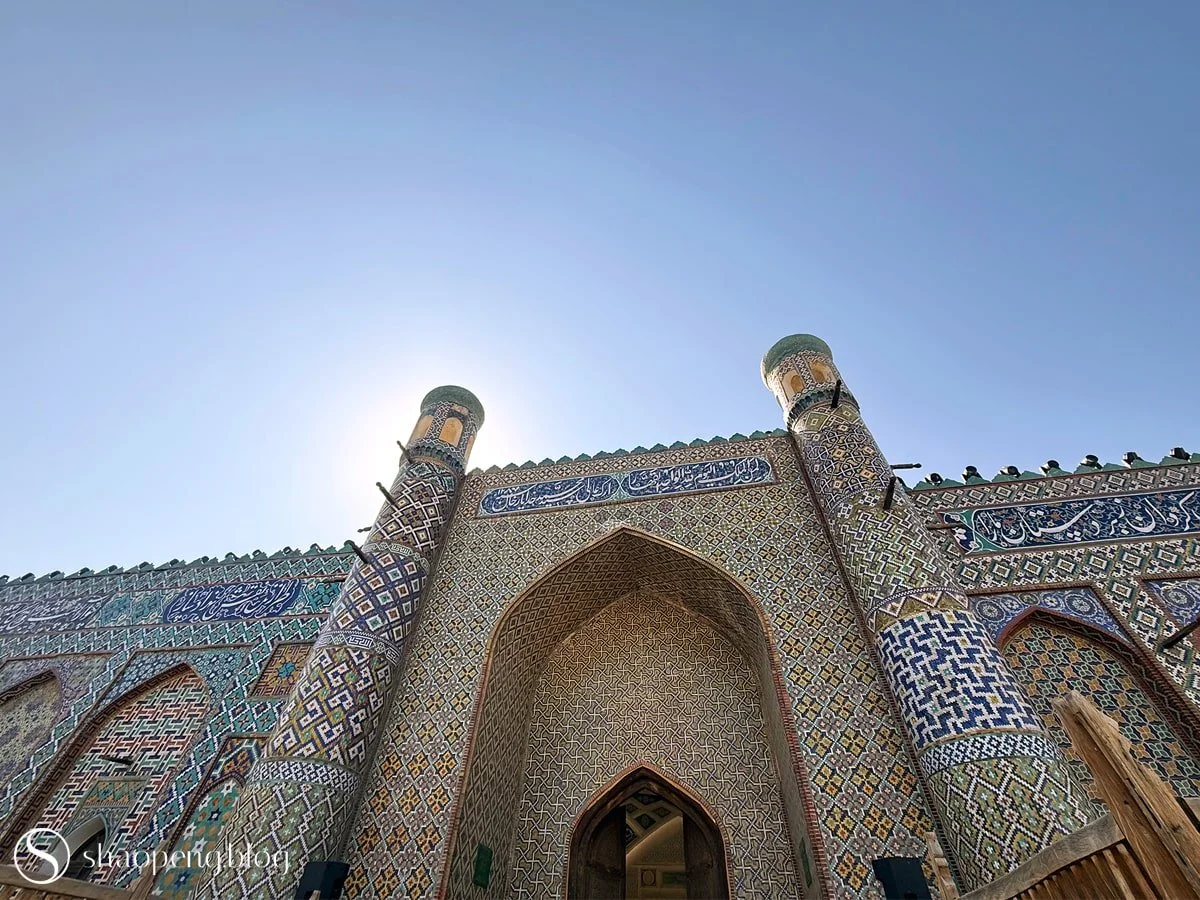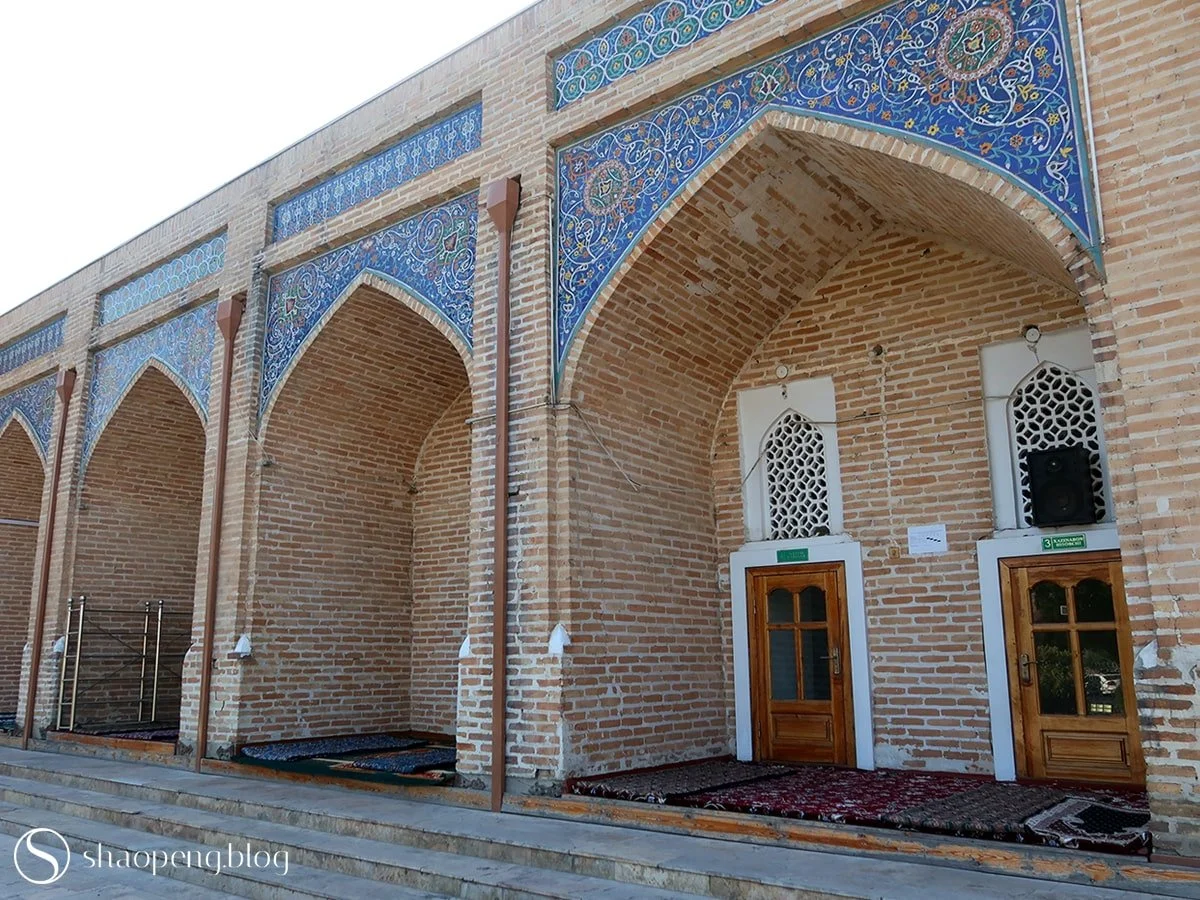Wander in Kokand: An Arts & Culture Guide
Kokand, the cultural heart of the Fergana Valley, breathes centuries of traditions through its palace, mosques, and monuments.
Sense of Wander: ★★★★★
Trees bearing pomegranates in the courtyard of Khudayar Khan’s Palace.
KOKAND, Uzbekistan — I was first drawn to Kokand by the melody of its name, which carries a certain charm. There are many stories about its origin, but my favourite traces it to Sogdian and Iranian roots, where the city’s name can be interpreted as “good city.”
Once the capital of the Kokand Khanate (1710–1867), Kokand was a major economic and political hub of Central Asia, its power and prestige still visible in the grandeur of Khudayar Khan’s Palace.
But the city’s allure reaches far beyond its architecture. For centuries, Kokand has been a fertile ground for arts and culture, drawing scholars, poets, and musicians who shaped the region’s artistic and intellectual life.
Abdurauf Fitrat (1886–1938), for instance, is celebrated for bridging traditional Uzbek culture and modern ideas, while local poets continued the rich legacy of Chagatai and Persian verse. Music and performance filled everyday life, with maqam melodies carrying through streets and palace halls.
At every turn, Kokand reflects a culture shaped at the crossroads of Silk Road civilisations, a place where architecture, literature, music, and tradition flourish side by side.
Often overshadowed by Bukhara, a renowned city of artisans, Kokand also has a remarkable craft heritage. In 2019, it was designated a “World Craft City,” coinciding with the launch of its International Festival of Handicrafts.
Kokand’s artisans are renowned for their craftsmanship, producing everything from cotton and silk fabrics, woodwork, paper, and jewellery to leather goods and even horse-drawn carriages. Nearby, Rishtan continues to be celebrated as a centre for ceramics.
Visiting Kokand today, you’ll come across a handful of museums, cultural sites, and historical monuments that tell the city’s story from past to present. In this arts and culture guide, I’ve put together a list of my favourite destinations for you to explore:
Khudoyar Khan Palace
Sense of Wander: ★★★★☆
Standing before Khudayar Khan’s Palace, where history and artistry meet in Kokand.
Khudayar Khan’s Palace was the political heart of the Kokand Khanate. It stands a living testament the city’s imperial past, offering perhaps the finest example of architecture in the whole region of the Fergana Valley.
Built in the late 19th century during the reign of Khudayar Khan (1845–1875), the palace was designed to impress both locals and visiting dignitaries, showcasing the wealth, power, and refined taste of the Kokand Khanate at its height.
Its facade is carpeted with lavish tiles, composed to form ornate patterns and calligraphic inscriptions in shades of turquoise and cobalt blue, accented with touches of hot orange, mustard yellow, and olive green. This intricate tilework reflects not only the khanate’s sophisticated aesthetics but also the mastery of local artisans who brought traditional craftsmanship to its highest expression.
Inside, towering wooden columns rise as if competing to reach the sky, their carvings complemented by intricate painted details. The rooms feature fine examples of ganch, or plaster carvings, depicting lush floral and plant motifs. One of the oldest forms of decorative art in Central Asia, ganch was widely used to adorn palaces, madrasas, mosques, and the homes of the wealthy.
Today, the palace houses Kokand’s Regional Studies Museum. Founded in 1925, it is one of Uzbekistan’s oldest museums where visitors can trace Kokand’s story from ancient times to the present through coins, household items, clothing, books, weaponry, and more.
Wanderer’s tips — Like much of the Fergana Valley, Kokand is generally quiet and sees few visitors. Take your time to explore the palace, wander through its halls, and let history reveal themselves at your own pace.
Jami Mosque (Museum of Applied Arts)
Sense of Wander: ★★★★☆
The ceiling of the ayvan inside Kokand’s Jami Mosque is carpeted with mesmerising patterns and colours that draw the eye.
The Jami Mosque, also known as the Friday Mosque, traditionally hosts large congregations, especially for the Friday noon prayers, or jumu’ah.
Tucked just off Kokand’s Chorsu Square, the mosque is believed to have originated as early as the 10th century. Unfortunately, the earlier structure did not survive Genghis Khan’s invasions, which left much of Central Asia in ruins.
Like many caravan stops along the Silk Road, Kokand’s story ebbs and flows with the tides of time. During the reign of the Kokand Khanate, Kokand emerged as a political and cultural hub, and the Jami Mosque was rebuilt under the commission of Umar Khan (reigned 1809–1822).
What makes the mosque truly unique is its vast courtyard and the ayvan lined with nearly one hundred wooden columns. Each column is intricately carved, supporting a high ceiling painted in colours and patterns that seem to hover between the cosmic designs of Islamic geometric art and the aesthetics of Himalayan temples. Wandering through this part of the sanctuary, it becomes easy to imagine how Kokand adapted the currents of Silk Road cultures into traditions uniquely its own.
In addition to its architectural beauty, the mosque also houses the Museum of Applied Arts. While the idea of having a museum inside a mosque may seem unimaginable at first, it doesn’t take long to realise how local artistry weave so effortlessly into the space of the mosque.
Inside, you’ll find workshops showcasing weaving, ceramics, knife-making, jewellery, and carpentry, crafts mastered and passed down through generations of artisan families. Here, you witness artistry shaped by daily life, skill, and devotion to one’s craft, and perhaps even take home a piece of it.
Wanderer’s tips — For those seeking authentic local crafts, the Museum of Applied Arts is a must-visit, where each creation carries Kokand’s rich artisanal heritage. Avoid visiting during the International Handicrafts Festival, when most artisans are away participating in the fair.
Norbutabiy Madrasa
Sense of Wander: ★★★☆☆
The facade of Norbutabiy Madrasa exudes a restrained, timeless beauty.
Nestled in the heart of Kokand’s old city, the Norbutabiy Madrasa is a complex where devotion and learning have gone hand in hand for centuries. Built in the 19th century under the patronage of Muhammad Norbutabiy, a respected scholar and statesman, the site was designed as both a centre of Islamic education and a place of worship.
Standing at the entrance, you are immediately struck by the architecture’s soaring portal and monumental presence. The tiled facade — while more modest than that of Khudayar Khan’s Palace — draws the eye with its geometric and floral motifs, inviting you to pause and reflect on the skill of Kokand’s craftsmen.
Venture a little further and you’ll find the hujras — small studying cells that once housed students learning Islamic law, philosophy, and literature — encircling the central courtyard. The mosque’s humble prayer hall draws worshippers inward, centering their thoughts and connection with the One.
Since its inception, Norbutabiy Madrasa has remained one of Kokand’s most important centres of education. Today, it continues to function as an active madrasa, nurturing students in the same tradition that has endured for centuries.
Wanderer’s tips — Visit in the early morning when the place is still quiet.
Modari Khan Mausoleum
Sense of Wander: ★★★☆☆
Modari Khan Mausoleum watches over the graveyard like a loving mother.
Modari Khan Mausoleum is one of Kokand’s most intriguing landmarks, built in honour of Khudayar Khan’s mother.
Set in a quiet corner of the old city beside the Norbutabiy Madrasa, it offers a gentler and more intimate encounter than the grandeur of the imperial palace.
Built in the mid-19th century, the mausoleum reflects the refined aesthetics of Kokand’s architectural tradition. Its facade is adorned with delicate tilework in cobalt blue, yellow, and white, arranged in geometric patterns reminiscent of the mosaic-like motifs found in traditional Turkmen carpets.
The mausoleum stands with a presence that feels almost maternal, overlooking the surrounding graves, recalling the woman whose influence shaped the khan’s early life. Standing here, you get a sense of the personal world behind Kokand’s ruling dynasty; it’s a reminder that even amid power and politics, devotion to loved ones remained at the heart of it all.
Wanderer’s tips — Avoid visiting the mausoleum when the sun is high. Instead, come in the early morning or late afternoon when the softer light brings out the full beauty of its coloured tilework.
International Festival of Handicrafts
Sense of Wander: ★★★★★
The streets of Kokand come to life during the International Festival of Handicrafts.
For those visiting Kokand in autumn, consider timing your trip with the International Handicrafts Festival — Uzbekistan’s first large-scale celebration devoted entirely to traditional crafts.
Launched in 2019, this biennial festival brings together a world shaped by centuries of artistry. Its most recent edition gathered more than a thousand Uzbek craftsmen and over three hundred artisans from across the world, turning Kokand into an open-air museum of arts, culture, and traditions.
For anyone curious about Uzbekistan’s diverse craft heritage, the event offers a rare chance to explore and experience it all in one place. During my visit, I found myself lingering at booths from regions less travelled, including Karakalpakstan, Jizzax, and Surxondaryo. The artisans there express a design language of their own, shaped by their customs and the textures of everyday life.
In addition to the display of crafts, the streets come alive with dance and music. Each performance offers a window into how celebrations unfold across Uzbekistan’s diverse regions, and visitors are often invited to join, bringing their own movements and flair to the rhythm of the festival.
Wanderer’s tips — With a rich program of activities and workshops running from morning until night, staying in Kokand for the entire festival allows you to take it in fully without feeling rushed.






